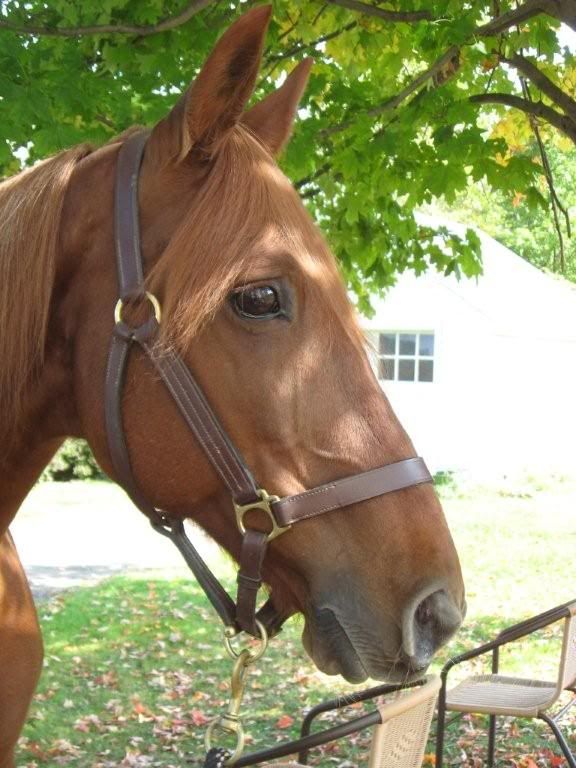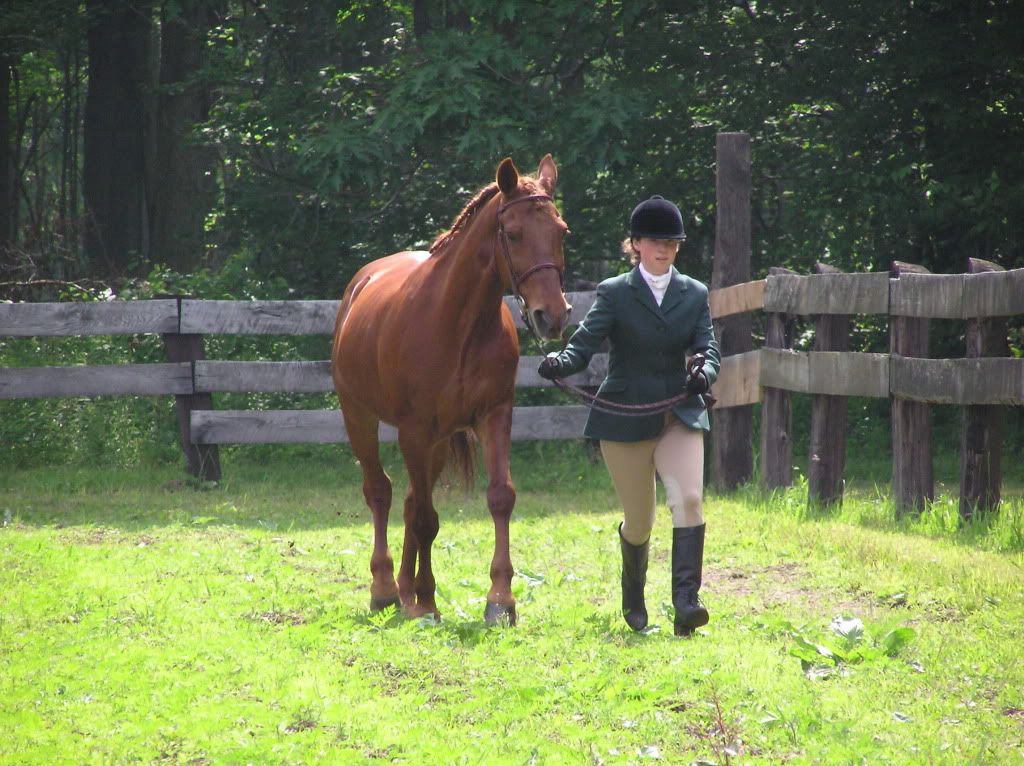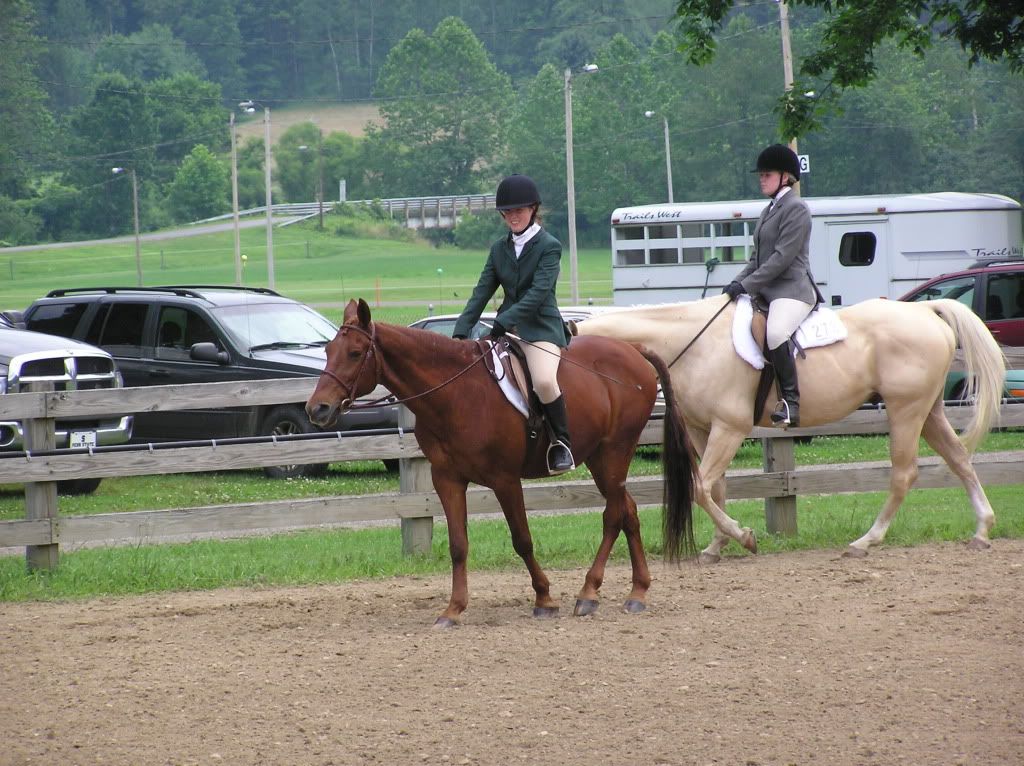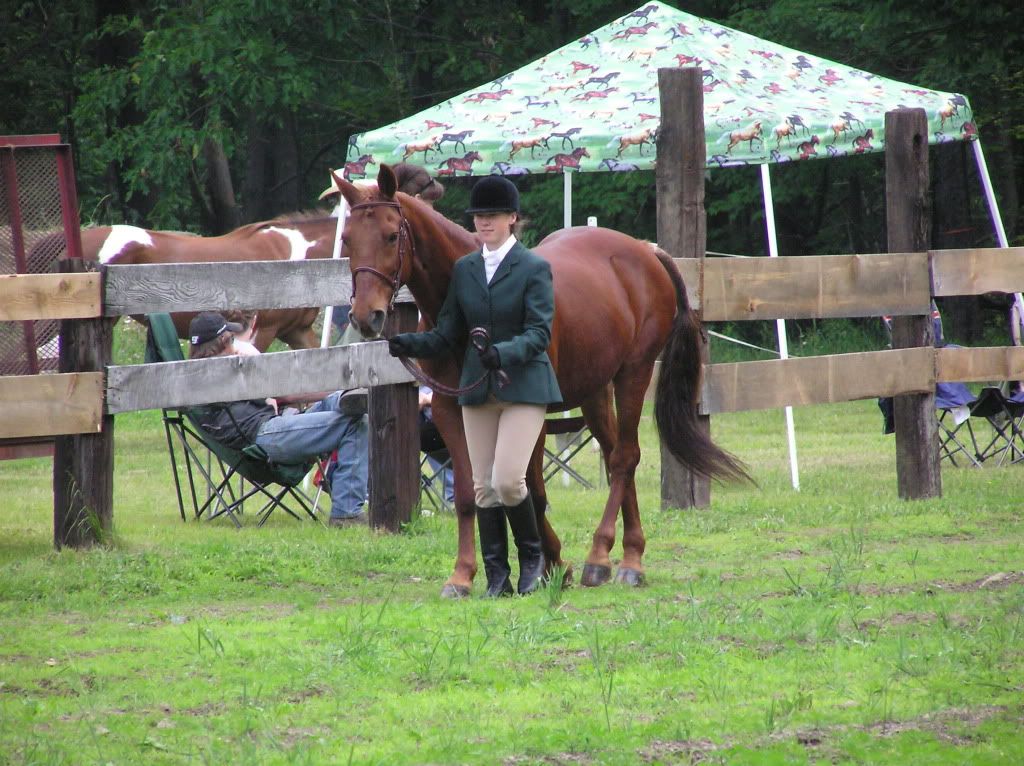The Feeling of Riding English
The problem with an English saddle is that there is so little of it.
The advantage of an English saddle is that there is so little of it.
To ride a horse well, the rider needs to feel what the horse is thinking. There are two ears to watch and they act like semaphores. Then there is the angle of the horse’s nose; pitched anything from 5 o/c to 10 o/c. There is the pressure put by the horse on the bit. However it is what is felt that matters most. It is the rider’s job out on a ride to decide where the pair are going; the horse’s role is to carry the pair to the destination. So to perform the human must know what’s going on in the horse’s mind by deciphering through the legs and thighs the signals emanating up from the horse. In this way the rhythm, the fitness, the strength and the mood of the horse is transmitted up to the rider. So the smaller the saddle, the better.
In competitive jumping the rider’s job is to steer the horse round the course and to put the horse in the optimum position for take off. It then remains for the rider not to interfere with the horse’s landing. In dressage the rider’s job is to tell the horse which move comes next in the programme; the horse’s job is to perform the movement instantly. The dressage rider must give instructive aids sensitively. In both sports, subtle communication, backwards and forwards between equine and human, is essential.
When hacking out, what is going on the horse’s brain is of paramount importance for the rider to recognize. If the horse is going to freak out then the rider welcomes some warning. With most horses, the rider can feel the tension building. It might have been a slight hesitation, or perhaps just a flicker. The head might turn. The horse might grab at the bit. The rider has to pick up the vibes before it happens. Any instantaneous shy will have to be absorbed by the rider. On the other hand, in a good partnership, the rider feels when the horse is happy and all is going well. The rider then knows if he can take a few chances. The communication is not verbal, it is sensed. The feeling passes through the thighs, the calves and the hands.
A sure footed trail riding horse is a fabulous creature to ride English. The rider chooses the route which the eager horse negotiates with gusto. If the horse should falter, the rider will pick the horse up and vica versa. They become a pair. The pathway twists, turns and undulates. The horse picks its way through the obstacles. The feel yet again transmits from horse to rider and back again. The rider’s aids are instinctive, maybe just a hint of pressure, or a slight hesitation; a nudge of the calf or a subtle shift of weight. The instructions from the rider pass back down through the hands, the calves and the seat. Who, even if watching closely, would know?
Whatever the merits of a Western saddle and there are many, nothing beats the small English saddle for Feel. What lies between the rider and the horse should be the minimum of leather to keep the pair glued together, whatever the movement and despite the disruptive forces of motion. However to enjoy this communion, first the equine and the human have to come together to know each other’s idiosyncrasies and that takes time and familiarity. But Feeling is everything and too much leather deadens the transmission of it. Which is exactly why I prefer to ride English, even though those Western saddles are so comfortable.
HOW DO YOU FEEL ABOUT THE SUBJECT?
Barry G








